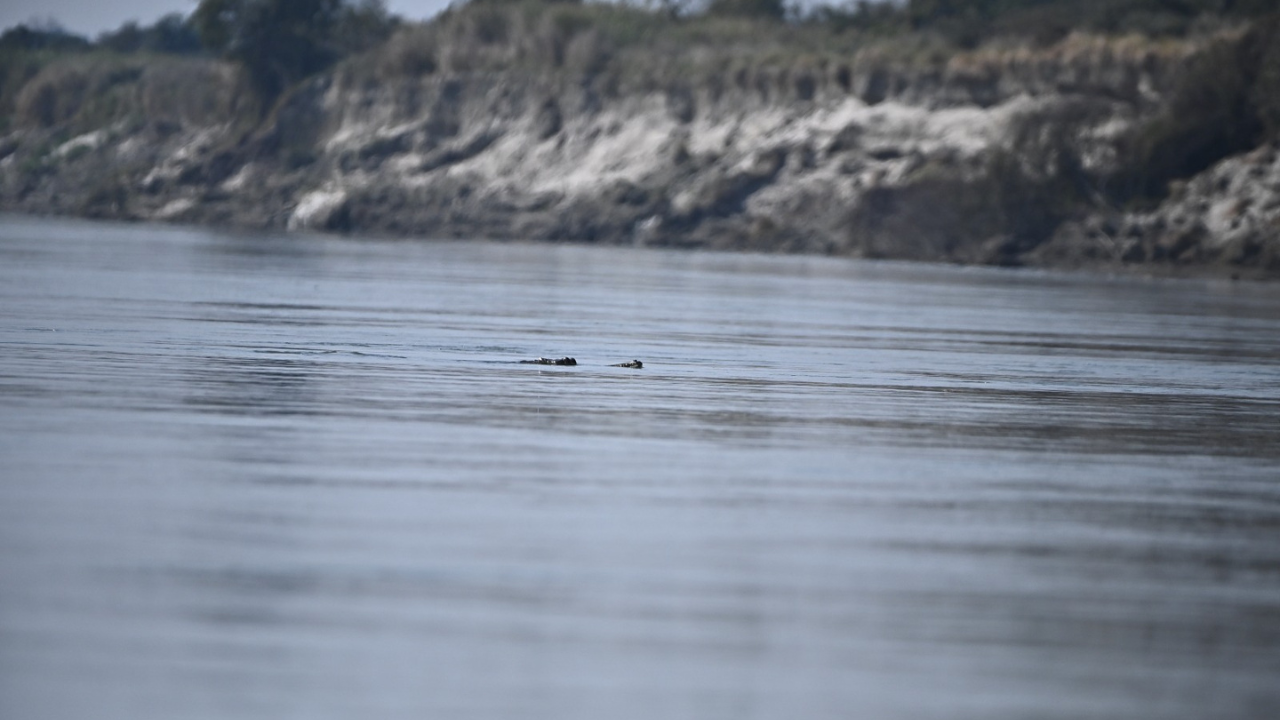[ad_1]
GUWAHATI: The presence of Indian Gharial (Gavialis gangeticus) in Greater Kaziranga has been confirmed by the forest department after a gap of 75 years, officials said, sharing the outcome of a latest survey conducted in January.
Due to massive decline in its population in the last century, the Indian Gharial has been placed under IUCN red data list as critically endangered and listed under Schedule I of the Wildlife Protection Act 1972.
Due to massive decline in its population in the last century, the Indian Gharial has been placed under IUCN red data list as critically endangered and listed under Schedule I of the Wildlife Protection Act 1972.
More than 900 freshwater turtles representing five species, along with one female gharial, were found during the survey conducted on a 160-km-long stretch of the Brahmaputra from January 16 to 25 by the Biswanath Wildlife Division (under Kaziranga Tiger Reserve) and TSA Foundation India. The study was carried out by a five-member team led by Sushmita Kar and Monalisha Basistha.
“Though there were unofficial reports of recurrent sighting of gharials (especially female) in the last three years in the Bishwanath stretch of the Brahmaputra, it has brought cheers to the Kaziranga fraternity as it now confirms the premise to restore back the species with due protection,” KNPTR field director Sonali Ghosh said.
The survey, stretching from Majuli to Koliabhomora bridge near Tezpur, was conducted in two transects (upstream and downstream) considering the huge width of the river covering a 320-km shoreline. The team conducted habitat suitability assessments for aquatic reptiles using parameters such as river depth, channel width, water flow, vegetation cover and extent, and quality of basking and nesting (soil).
Officials said opportunistic sightings of other aquatic wildlife such as Gangetic river dolphins and otters were also recorded to compare notes with the recent dedicated surveys on the same. “Top ten habitats were characterized as a result of this survey,” said an official.
Kaziranga has a recorded abundance of over 42 species of freshwater fishes and thus, officials said, it is one of the best habitats for gharials in the long run.
“Recently, due to our extensive conservation efforts, we have sighted ghariyals, small clawed otters and Binturong at Greater Kaziranga for the first time in recent memory along with other exotic species,” chief minister Himanta Biswa Sarma also wrote on X.
While India’s largest gharial population resides in the National Chambal Sanctuary, which hosts around 77 per cent of the global adult population, the rest found in India are concentrated in various locations, including the Katarniaghat Wildlife Sanctuary in Uttar Pradesh, the Gandak River on the Indo-Nepal border, Corbett National Park, the Son River, Mahanadi River and Hastinapur sanctuary.
Small populations, maybe a few individuals, have been observed in the Ken River, Yamuna River, Brahmaputra River, Ghaghara River and Bhagirathi-Hoogly River. Historical records of gharials from sixteen rivers in the northeast in the 1950s reported only secondary habitat information and it was thought to be locally extinct, said an official.
[ad_2]






